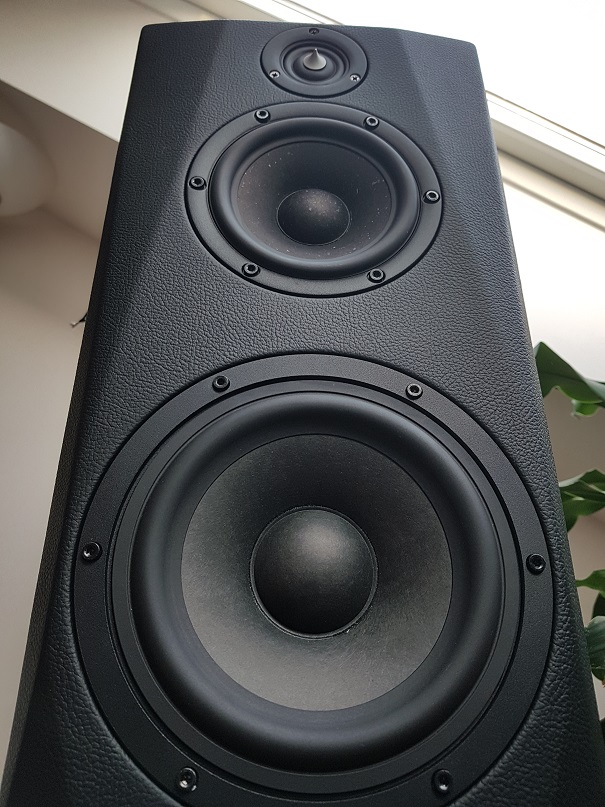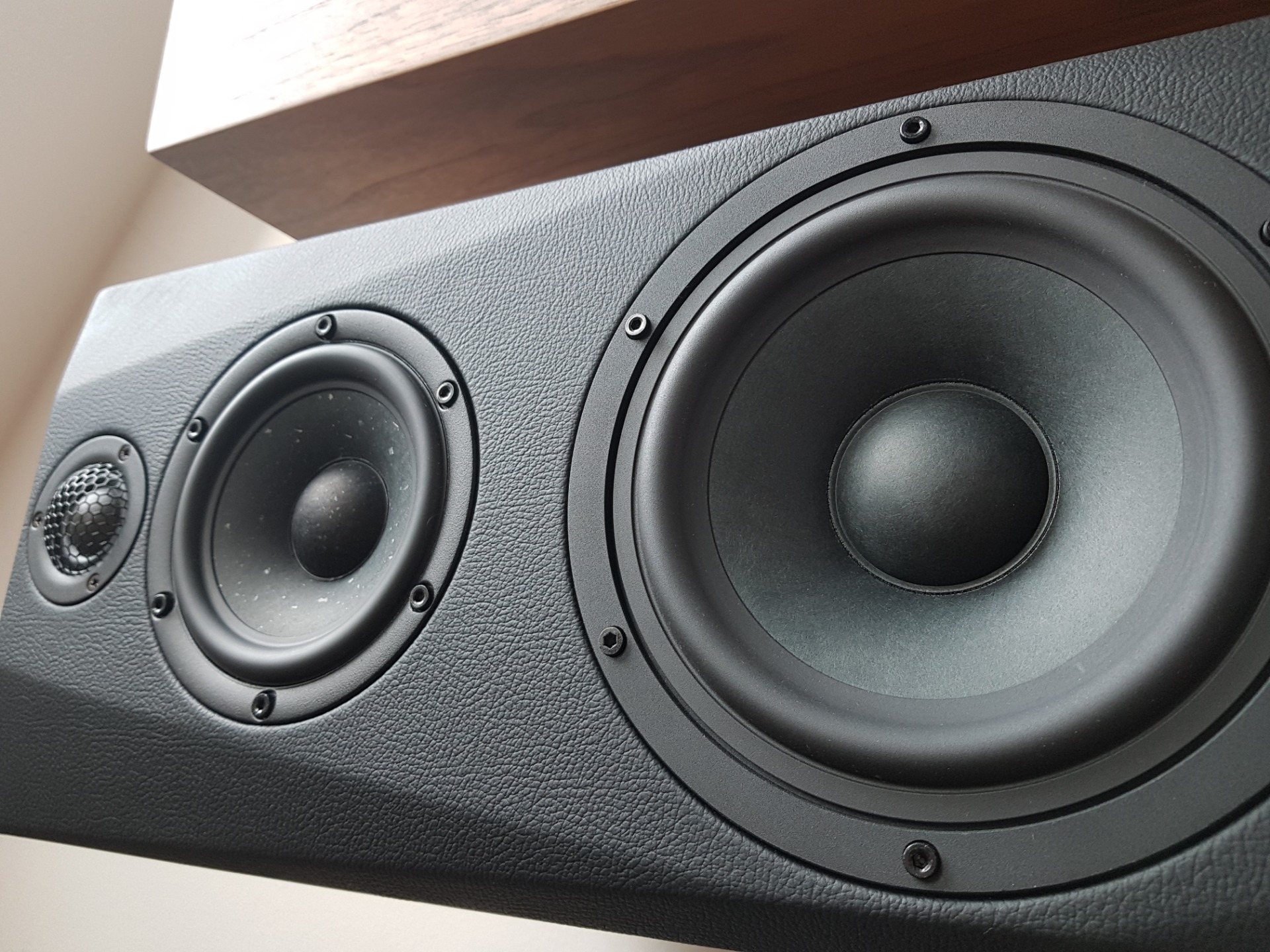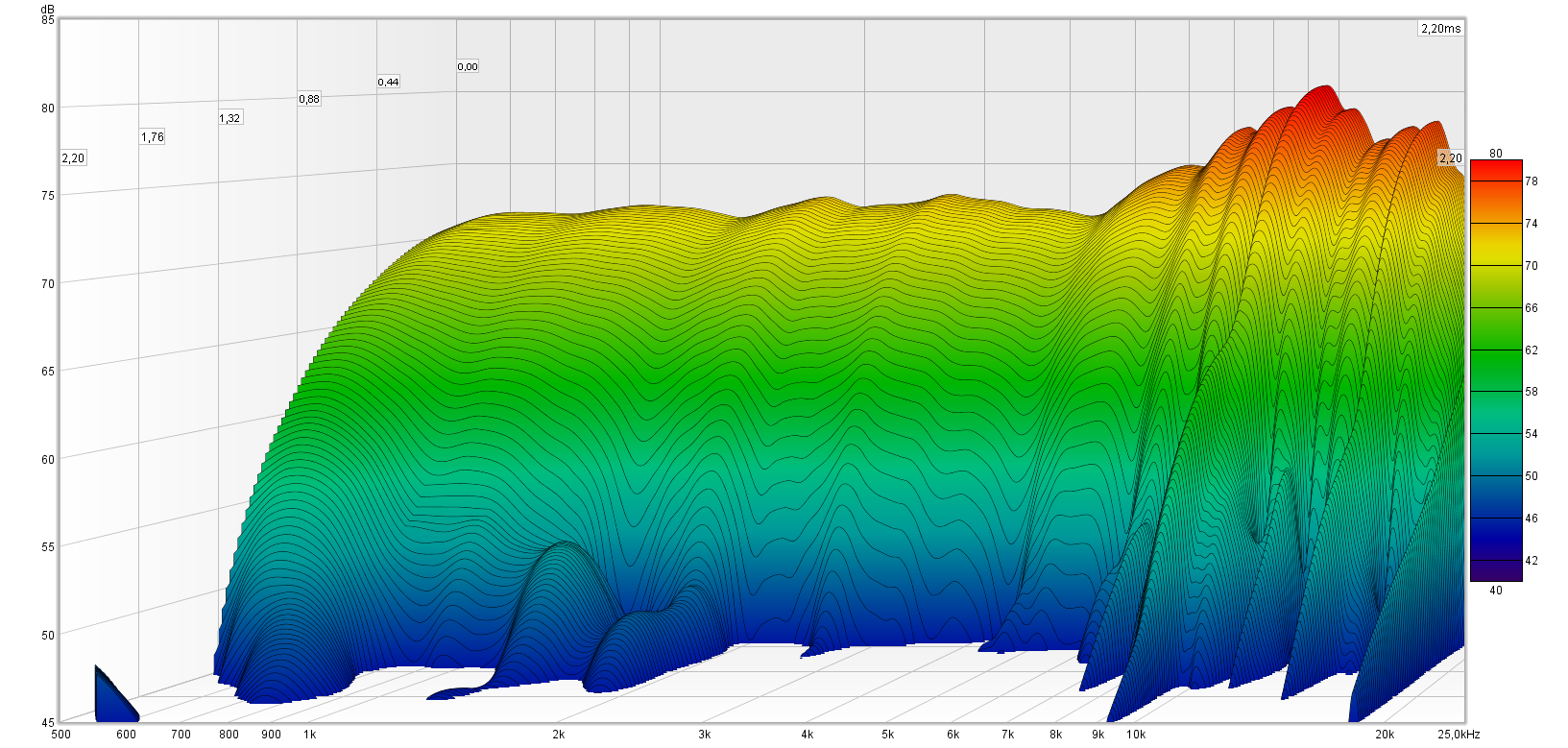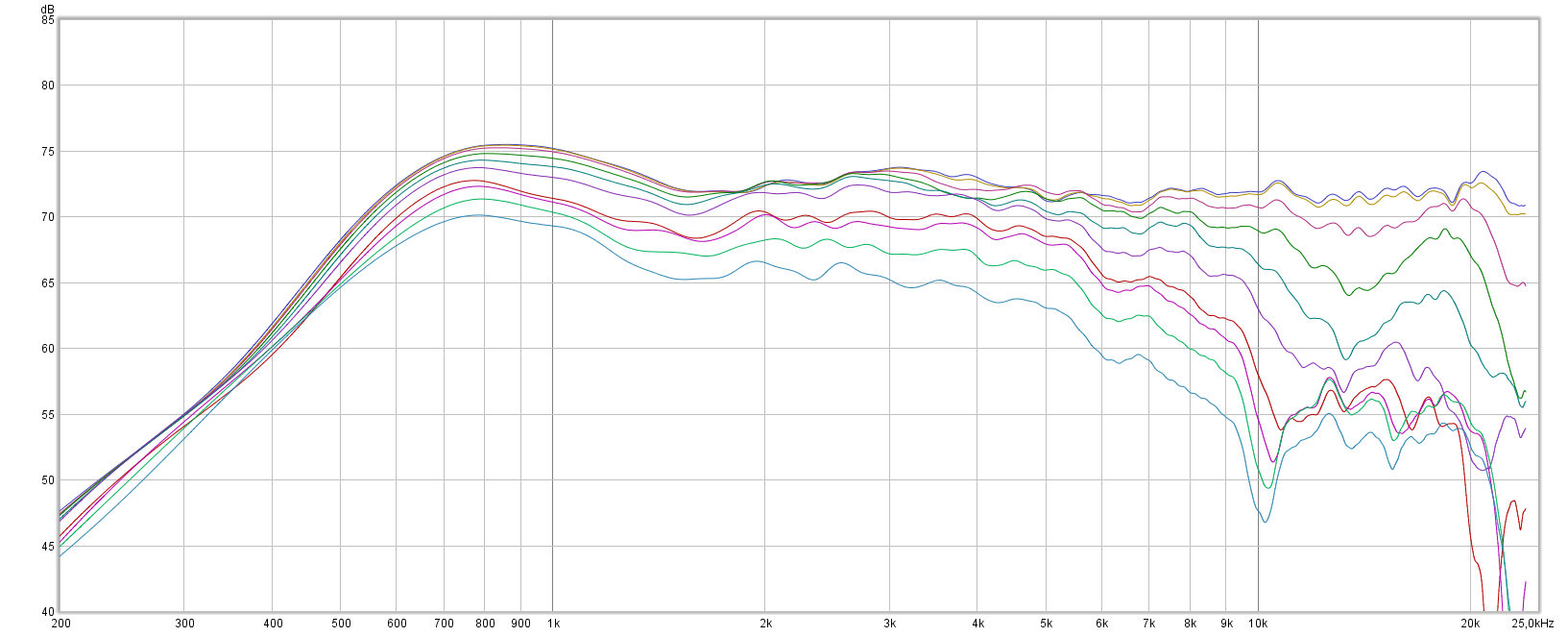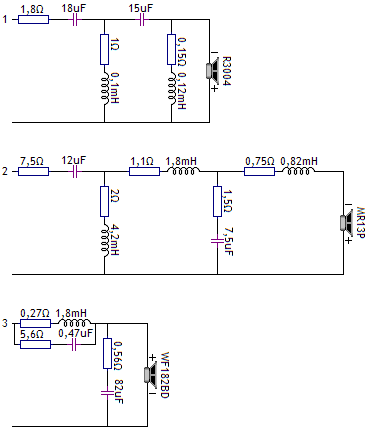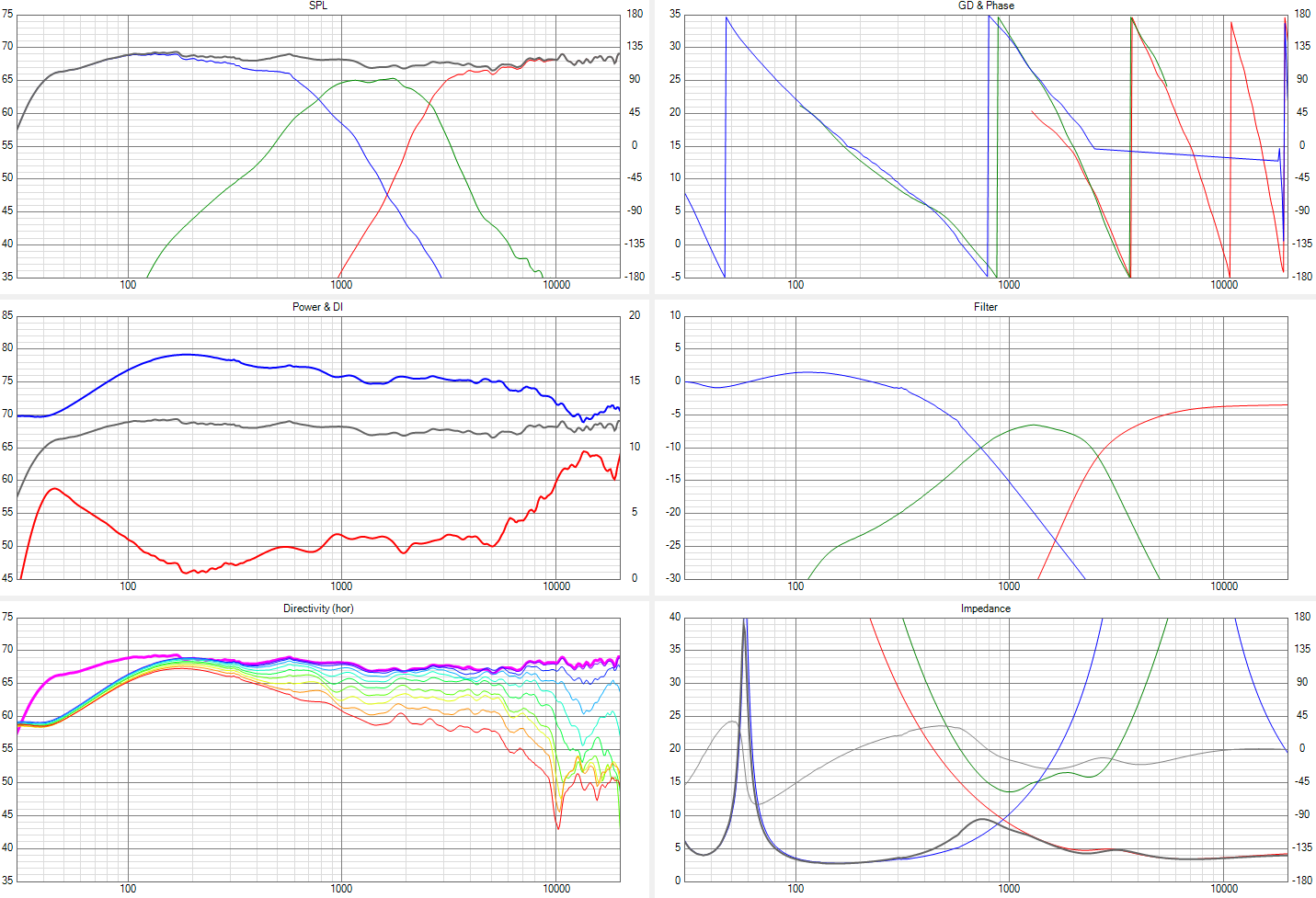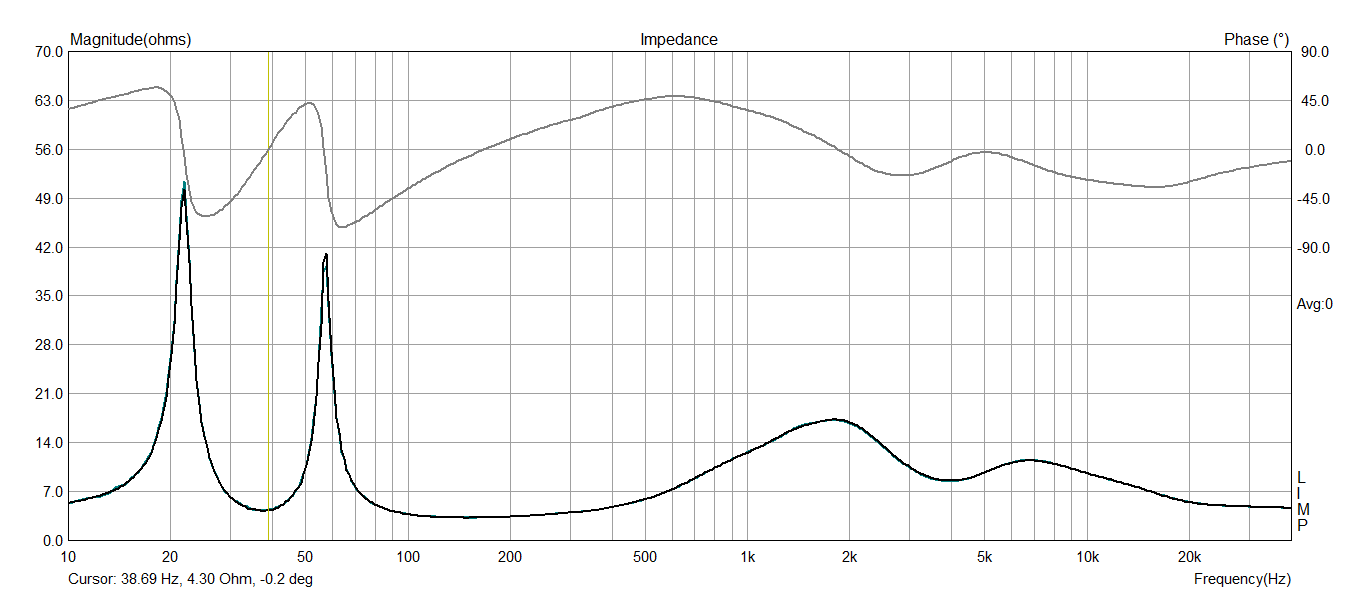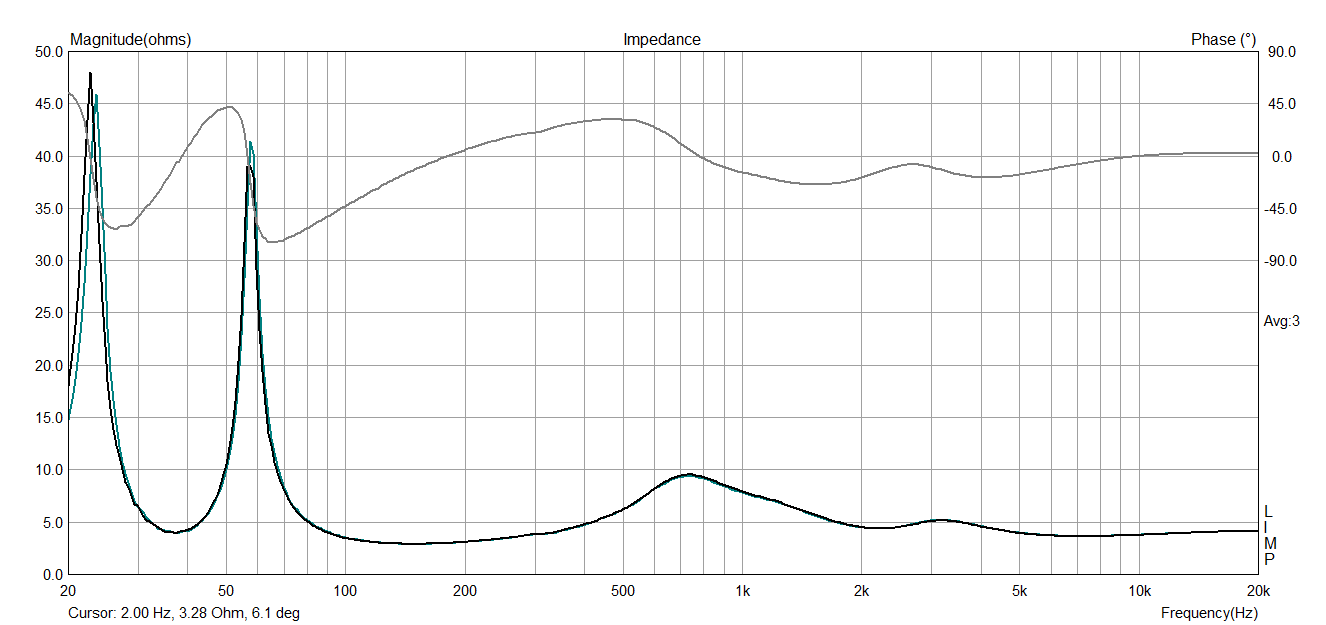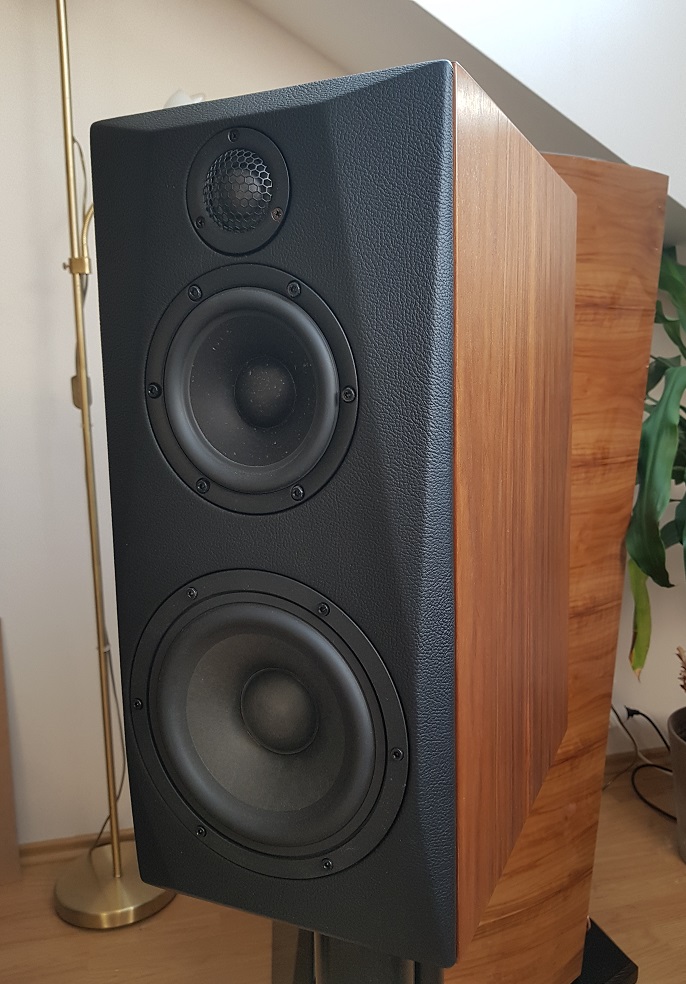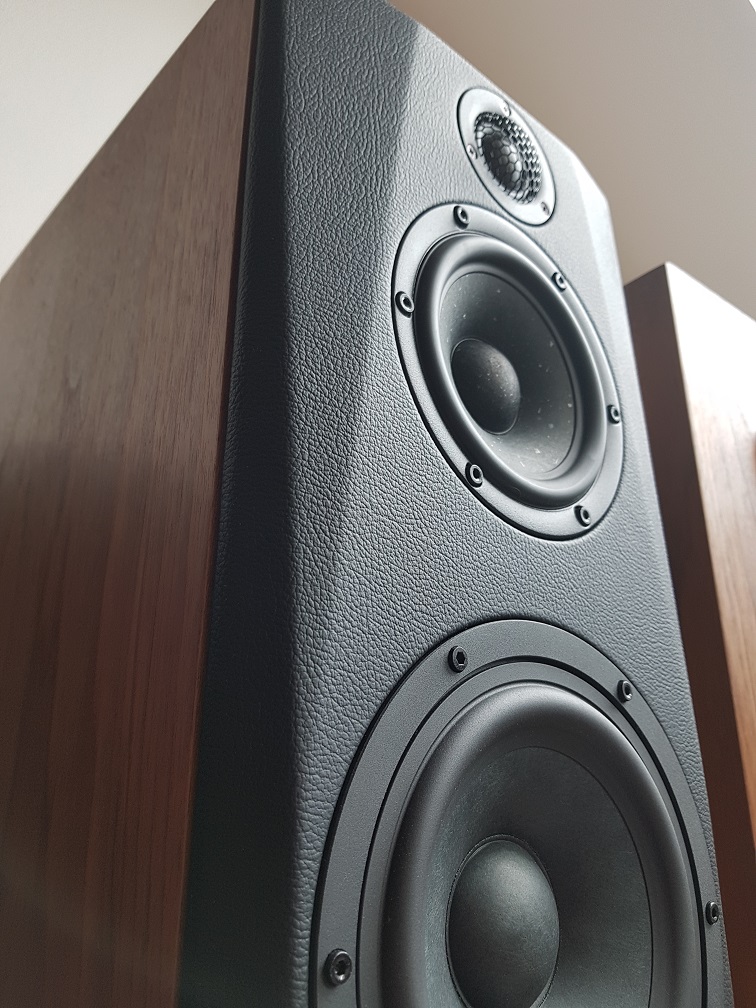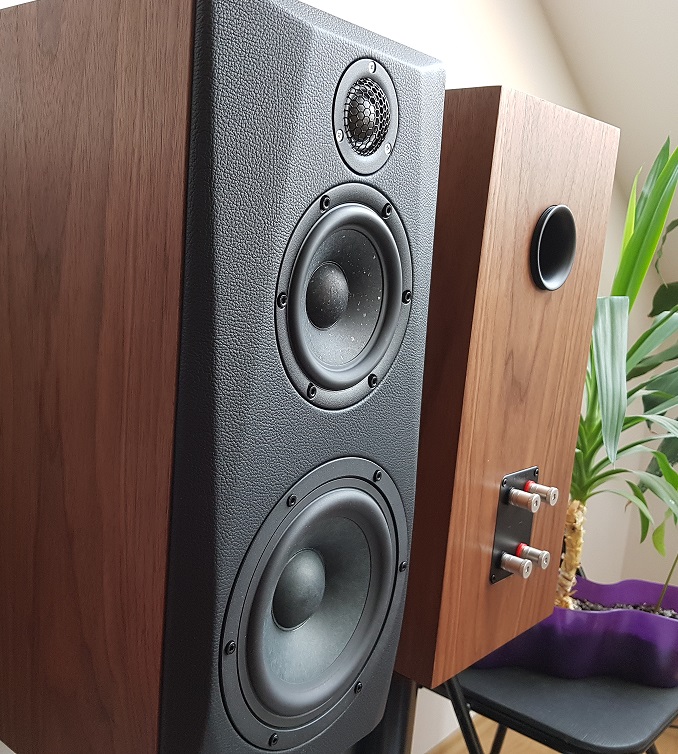SatWaveSS
3-way standmount loudspeaker 7"+4"+1"
Drivers: Wavecor WF182BD09, Satori MR13P-8, Scan Speak D3004/602000 and R3004/602000Cabinet: net volume 20l for woofer, BRSensitivity: ~85dB/2.83V/1mImpedance: min 2.9Ohm at 150Hz, nominal 4Ohm
Dimensions: HxWxD 480x220x360 mm
This project started with my curiosity for MR13 midranges. After experiences with MW16, MR16 and MW19 I felt MR13 series could be even better and allow for higher crossover.
MR13 measurement in the baffle showed very nice on axis response and off axis even better.
As I wanted crossover 3kHz or even higher, I was looking for small flange tweeters. After experience with D2004 I decided to try its bigger brother. These Scan Speak drivers are usually safe bet when it comes to sound quality and I do not like bad surprises.
Woofer choice was not easy, I wanted it to go quite deep, and I was willing to sacrifice some dB from sensitivity. Preliminary Basta modelling showed this woofer works well in ~18l volume and system sensitivity would be ~85dB/2.83V/1m. Not bad at all. This choice proved to be very right. Bass response is deep (in the context of 6" midwoofers), firm, not boomy neither muddy, and very energetic. It is highlight of this project.
Overall sound has impact and liveliness, due to dedicated midrange it doesn't loose the grip at higher SPL. SatWaveSS is not picky for only good recordings.
Drivers measurements
Mic distance 90cm, impulse window 4.5ms, ref axis between mid and tweeter.
Update R3004 version:
Individual drivers responses measured for R3004 version are below. These measurements were taken after 2-3months of listening to Satwavess, so WF182 and MR13 were both well burned in.
First thing to notice, WF182 breakup region is different from measurement above. This could be piece to piece variance, or change of soft cone properties.
MR13P differs in 1-2kHz regions. Most probably caused by mechanical differences in cone/surround interfaces.
R3004 - ring radiator response seems to be less prone to cabinet diffractions
Wavecor breakup obviously will need attention at crossover modelling. LR2 below 1kHz plus RLC addressing that breakup should suffice get it -35dB below fundamental loudspeaker level. Midrange and tweeter have no problems and crossover between 2-3kHz should be ok.
Crossover modelling
As the baffle is not tilted or stepped, MT crossover had to be kind of assymetric LR4. I started with quite flat response from 100Hz all the way to trebles.
After initial listening and burning in of the drivers, midrange and tweeter levels had to be adjusted. Midrange and trebles were simply to forward which was very ear fatique. Several options were tried and result is shown below.
There was 5dB bump at 17kHz, initially I compensated response in that region to flat with RLC. After that I omitted this compensation. At the fist listening it sounded promising, but showed to be just too much. So I ended up with compensation somewhere in between, as shown below.
Off axis responses are very consistent and provide power response free of any significant bumps or dips.
I was also modelling additional woofer RLC to lower the area around 100Hz and increase impedance between 100-200Hz, but after all, this RLC did not bring sonic improvement and min impedance 2.9Ohm is still reasonable for the most 4Ohm capable amplifiers.
Six pack below is based on horizontal off axis measurements. Verticals were not measured.
Update: R3004 version
Initial crossover.....just out of curiosity
There was certain sonic appeal of this simple, shallow slope crossover. Sense of the speed and urgency of the sound was clear since the first listening. I started with with flat response, but after short listening tweeter and midrange levels had to be lowered as shown on the six-pack. This brought balance to the sound. After several listening sessions I also started to feel certain grain in midrange and highs, sound was too forward, too muchh in your face. Phase tracking was not perfect, especially above crossover point, and midrange/tweeters levels subtracted each other. Also MR13 9kHz breakup suppression was only ~13dB below reference level.
This experience showed feasibility of this crossover, but more linear midrange would be needed.
This version also used D3004/602010, dip at 13kHz showed to be 1 piece issue. I decided to switch to 602000 version.
Measurements D3004 version
Measured horizontal responses 0-90deg are below. Mic distance 90cm, gating 4.2ms.
Impedance of both finished loudspeakers is below, I could not wish better match. Minimum impedance is 2.9Ohm at 170Hz.
Measurements R3004 version
Horizontal FRs 0-90 degrees with 10degrees steps. Mic distance 90cm, impulse gating 4.5ms.
Impedance of final pair of loudspeakers
Photos

